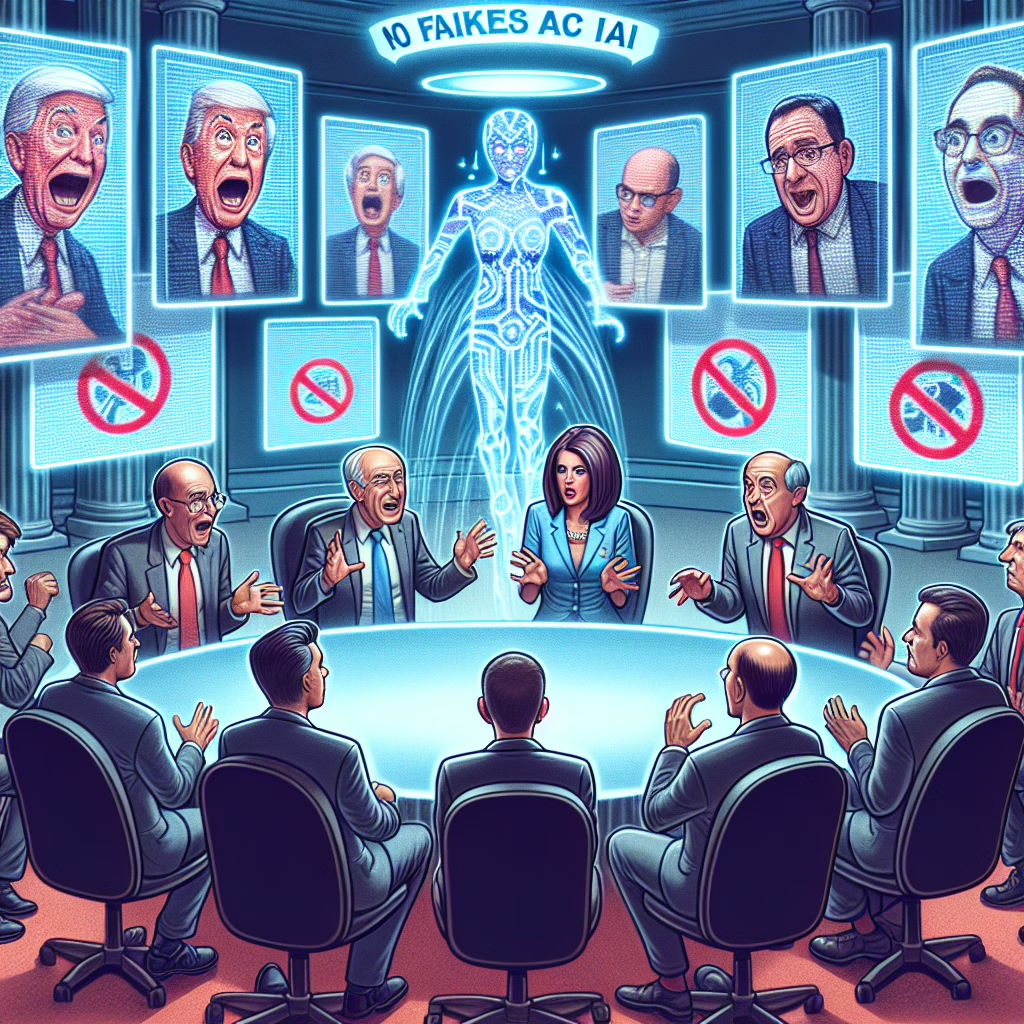Ah, deepfakes! Those delightful digital creations that can make anyone look like they’re doing or saying anything. In the wild west of technology, where a quick video edit can morph a mundane moment into a viral sensation, the No Fakes Act has galloped back into Congress’s spotlight. This significant legislation aims to tackle AI deepfakes and ensure that our online identities remain intact. Spoiler alert: it’s not just about keeping your grandma from thinking she’s watching a new movie starring her favorite actor!
The Return of the No Fakes Act
In 2025, Congress is reintroducing the No Fakes Act, a legislative move that feels as timely as ever. With AI deepfakes technology evolving faster than you can say “digital deception,” lawmakers are stepping up to address concerns around misinformation and identity theft. This act isn’t just for the thrill-seekers who love a good conspiracy; it’s a serious attempt to protect consumers and maintain trust in our digital interactions.
The No Fakes Act aims to establish guidelines for how AI-generated content, particularly deepfakes, should be labeled. Imagine scrolling through your social media feed and encountering a video of your favorite celebrity endorsing a product they’ve never even heard of! Thanks to this act, you’ll at least know if it’s real or just another AI trick.
Why Should We Care About AI Deepfakes?
You might be asking yourself, “Why should I care about AI deepfakes?” Great question! These digital masterpieces can be entertaining but also pose significant risks. From spreading misinformation during elections to creating fake news that could sway public opinion, deepfakes are akin to fireworks on the Fourth of July—exciting but potentially dangerous if not handled properly.
The No Fakes Act seeks to tackle these issues head-on by requiring clear disclosures when content has been altered or generated by AI. Just like how we expect food labels to inform us about what’s in our snacks (because no one wants a surprise ingredient!), we should have transparency in our media consumption too.
How Will the No Fakes Act Work?
Under this proposed legislation, companies like Google and OpenAI would need to implement measures ensuring that any AI-generated content is easily identifiable. This means more than just slapping a label on it; we’re working toward developing robust verification systems that help users discern fact from fiction.
Think of it as putting a warning label on your favorite snack that says, “May contain traces of deception!” It might not deter you from indulging, but at least you know what you’re getting into!
The Tech Industry’s Response
The tech industry has reacted with mixed emotions. Some welcome the regulation as a necessary step toward accountability in an age where anyone with an internet connection can create believable fake content. Others fear it may stifle innovation and creativity. After all, isn’t part of the fun seeing how inventive people can get with technology?
However, it’s crucial to strike a balance. We want innovation without inviting chaos into our lives. The No Fakes Act could serve as that much-needed fence around this wild pasture of creativity, ensuring that we all benefit from advancements while minimizing risks.
The Bigger Picture: Digital Literacy
While the No Fakes Act is an essential stride toward managing AI deepfakes, we must also focus on enhancing digital literacy among consumers. After all, no law can completely eliminate the risk of falling for a well-crafted fake video or audio clip. Education is key!
Imagine schools teaching kids how to identify fake news and deceptive media from an early age—now that’s something worth celebrating! Empowering individuals with knowledge will ultimately create a more discerning audience capable of navigating the complexities of the digital world.
A Call for Collaboration
As we gear up for this legislative journey, collaboration between lawmakers, tech companies, and consumers will be vital. The No Fakes Act presents an opportunity for all parties to work together toward a common goal: protecting our identities while fostering innovation.
This isn’t just about preventing deepfake disasters; it’s about ensuring that technology serves humanity and doesn’t become its own worst enemy!
So let’s raise our virtual glasses to the No Fakes Act! May it lead us toward a future where authenticity reigns supreme in our digital lives. And remember, whether it’s memes or serious news articles, always check your sources!
What do you think about the No Fakes Act? Will it help curb the tide of misinformation? Share your thoughts below!
Special thanks to CCN for providing insightful coverage on this important topic.

